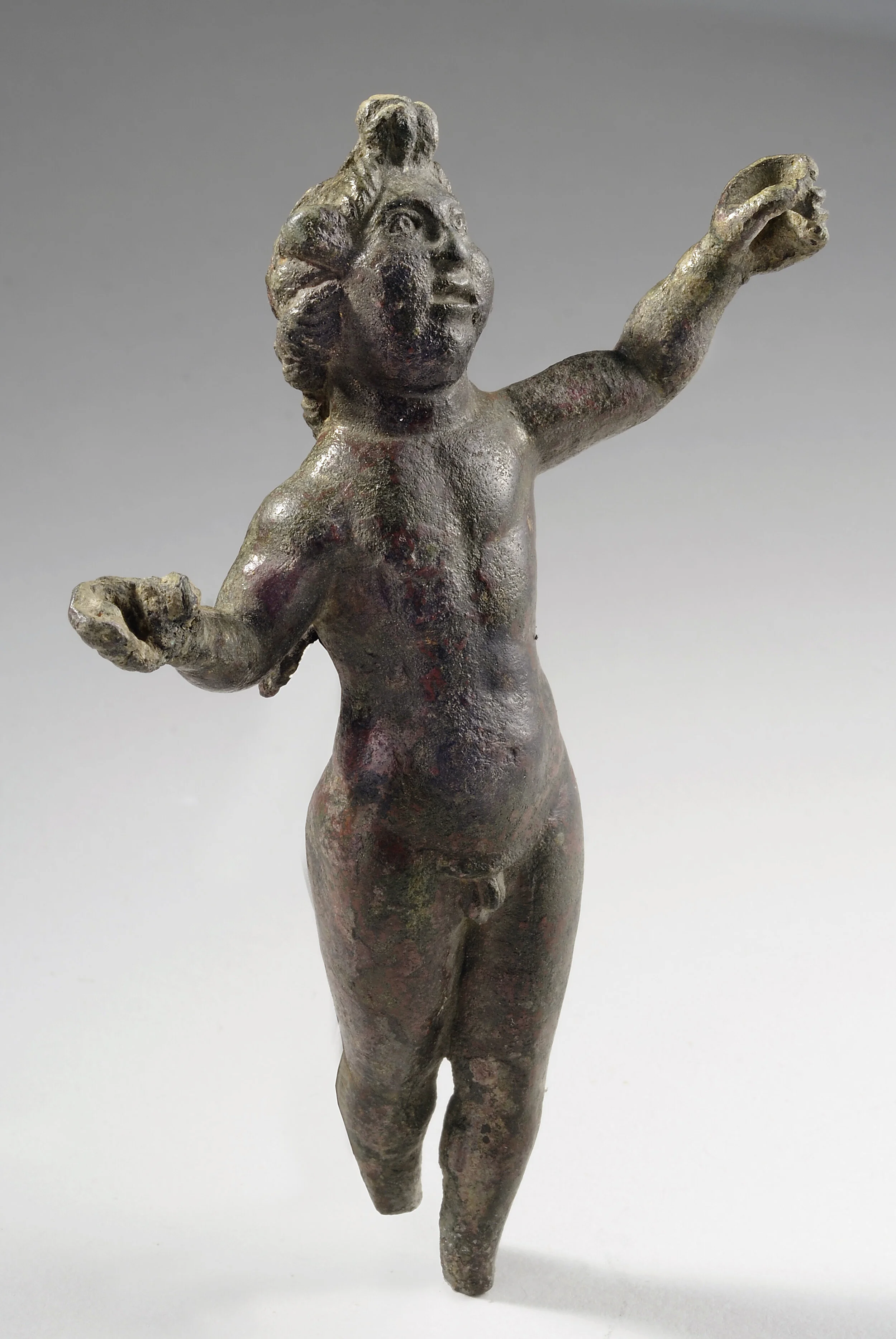Ancient Roman Bronze Statuette of a Sheep Standing on an Altar






Ancient Roman Bronze Statuette of a Sheep Standing on an Altar
Roman, 2nd – 5th century A.D.
Bronze
H. 8.7 cm
Provenance: Ex German private collection.
Serial NO: 15350
This cast bronze statuette is fixed atop a thin base, the trapezoidal shape of which is determined by the position of the sheep’s hooves. It is then mounted on top of a rectangular plinth, which reproduces a rectangular triple-stepped altar, provided with four small feet, one at each corner.
In spite of some small scratches (especially on the animal’s muzzle), this work is in an excellent state of preservation; a beautiful green patina covers the surface of the metal. The circular repairs visible on the bottom of the plinth and on the left cheek of the sheep are ancient ones.
The animal – its gender is not clearly indicated, but the absence of horns suggests that it may be an ewe – is standing in a static position with its right feet slightly in front; it turns its head to the left as if to return the viewer’s gaze.
The long fleece of the ewe is primarily represented through thick volume, and then, on the surface, by a series of undulating incisions that are quite realistic. These reproduce the curls of the pelt and cover the entire body of the animal. The muzzle, which (as well as the legs) are not covered by the fleece, is pointed with many details indicated in a precise and realistic manner: the round eyes are surrounded by folds of skin, the flat of the nose and the nostrils, the horizontal mouth and the pointed ears are located at the edge of the fleece. The tail is represented by a thick tuft of undulating strands; the legs, short and stocky, end in perfectly delineated hooves.
Along with the goat, the sheep is among the first species of animals that man domesticated (in the Near East, around the 8th millennium B.C.) for the purpose of providing foodstuffs (meat, milk products) but also for their wool, used for the manufacture of textiles and rope. As proven by numerous ancient texts (starting with Homer), goats and sheep were the animals most frequently offered to the gods, which explains, at least partially, their popularity in ancient iconography. In the classical world, sheep were most often associated with Hermes (Mercury), the god of merchants and voyagers, who was also the guardian of herds, or with Orpheus, who could enchant animals. At the end of the Antiquity, within a Christian context, sheep and ewes symbolized the disciples of Christ and their new religion.
This statuette, whose artistic quality is unequalled among a number of the closest stylistic parallels (in one case, that of a standing ewe on a plinth-altar suckling a lamb that is between her legs!) may therefore have belonged to different cultural and ideological contexts from the final centuries of the ancient world.







